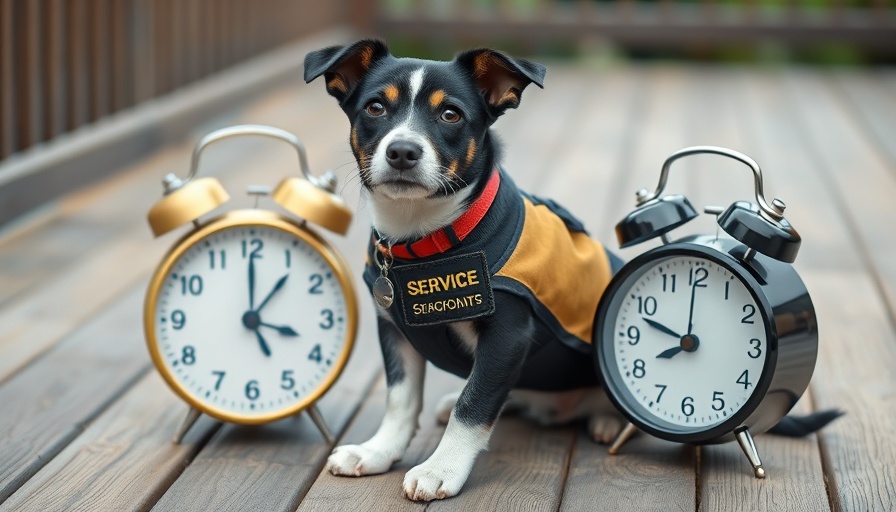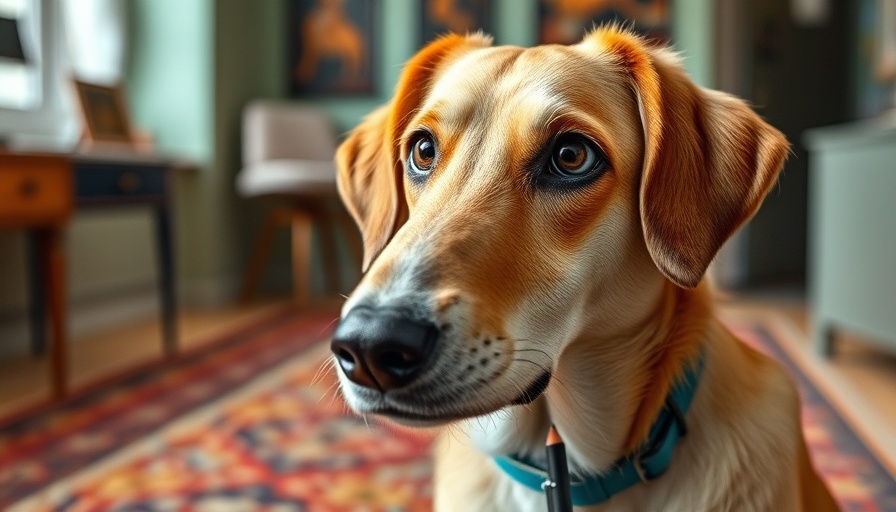
Smoke and Buddy: Safety First for Our Furry Friends
The wildfires that seasonally impact Truckee significantly shape our outdoor experiences, especially for our beloved pets. As smoke fills the air, prioritizing their health becomes crucial not only for their well-being but also for our peace of mind. Understanding how to manage dog outings during such conditions is vital for responsible dog ownership.
Identifying Risks During Wildfire Season
Wildfire smoke carries tiny particles that can penetrate deep into both human and animal lungs, posing serious health risks. Animals, particularly brachycephalic breeds—those with flat snouts like bulldogs and pugs—are particularly susceptible to respiratory distress. Symptoms can include coughing, panting, fatigue, and signs of general malaise. The Wildfire and Smoke Association stresses the importance of recognizing these signs and acting swiftly; awareness of your dog's health is essential during smoky days.
Monitoring Air Quality: A Lifesaver for Our Pets
The good news is that technology is at our disposal to help ensure safety on outdoor adventures. Websites like AirNow.gov and IQ Air provide real-time updates on air quality specific to our locations. That means pet owners can make informed decisions about whether to head outside or stay in. When air quality dips—particularly into the "red" or "purple" zones—outings can be adjusted accordingly. Morning walks often promise healthier air, allowing us to enjoy nature while keeping our pets safe.
Preparing and Planning: Essential Strategies for Outings
To navigate the challenges posed by wildfire smoke, proper preparedness is paramount. If conditions turn hazardous, proactive communication can make all the difference. Encourage your local dog care services to have established protocols for smoke management. At Buddy Dog Care, for instance, they emphasize clarity by notifying dog owners of air quality evaluations before any scheduled outing, ensuring that all precautions are taken.
Essential Precautions for Healthier Adventures
The following strategies will help ensure the health of your furry companions during smoke season:
- Stay Indoors: Avoid intense outdoor activities when air quality is poor. Your adventurous spirit won’t enjoy if your dog develops a cough or shows indications of respiratory distress.
- Wear Masks: In red air quality levels, wearing masks during outings can help mitigate some exposure to pollutants.
- Flexible Scheduling: Adjust outing times to early mornings when air quality is typically better. Familiarity with local wind patterns can aid in choosing suitable times.
Signs of Distress: What to Look For
Being alert to your pooch’s condition is vital, especially with respiratory concerns. Keep an eye out for these signs:
- Itching or watery eyes
- Coughing or wheezing
- Panting or increased breathing rate
If any of these symptoms arise, it’s essential to act quickly; seek veterinary assistance and consider cancelling outings until air quality improves.
Why Community Awareness Matters
Awareness isn’t just about individual action; it’s about community responsibility. As dog owners in wildfire-prone areas, we need to support each other and share resources. Whether it's through local social media groups or community forums, sharing experiences can enhance our collective ability to keep our pets safe. Education and communication ensure that everyone is informed about policy changes, safety practices, and their pets' welfare.
Your Role: Empowering Responsible Dog Ownership
It's a dog owner’s duty to amalgamate safety with adventure even in the wake of wildfires. Prepare evacuation kits, ensure your pet has identification, and keep copies of medical records handy. As we navigate this season, let's empower one another with knowledge, support, and resources to keep our dogs safe. Make your dog outings not just adventures but safe experiences.
Let's raise awareness, build community collaboration, and share resources that allow our dogs to migrate safely through smoky conditions. Remember—your pet relies on you for protection, and equipped with the right knowledge, we can all enjoy the beauty of the outdoors together, rain or shine.
 Add Row
Add Row  Add
Add 




 Add Row
Add Row  Add
Add 

Write A Comment